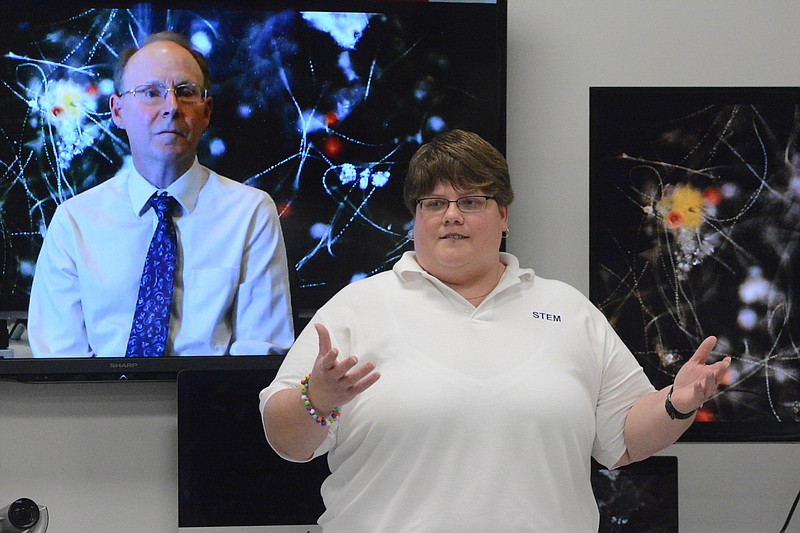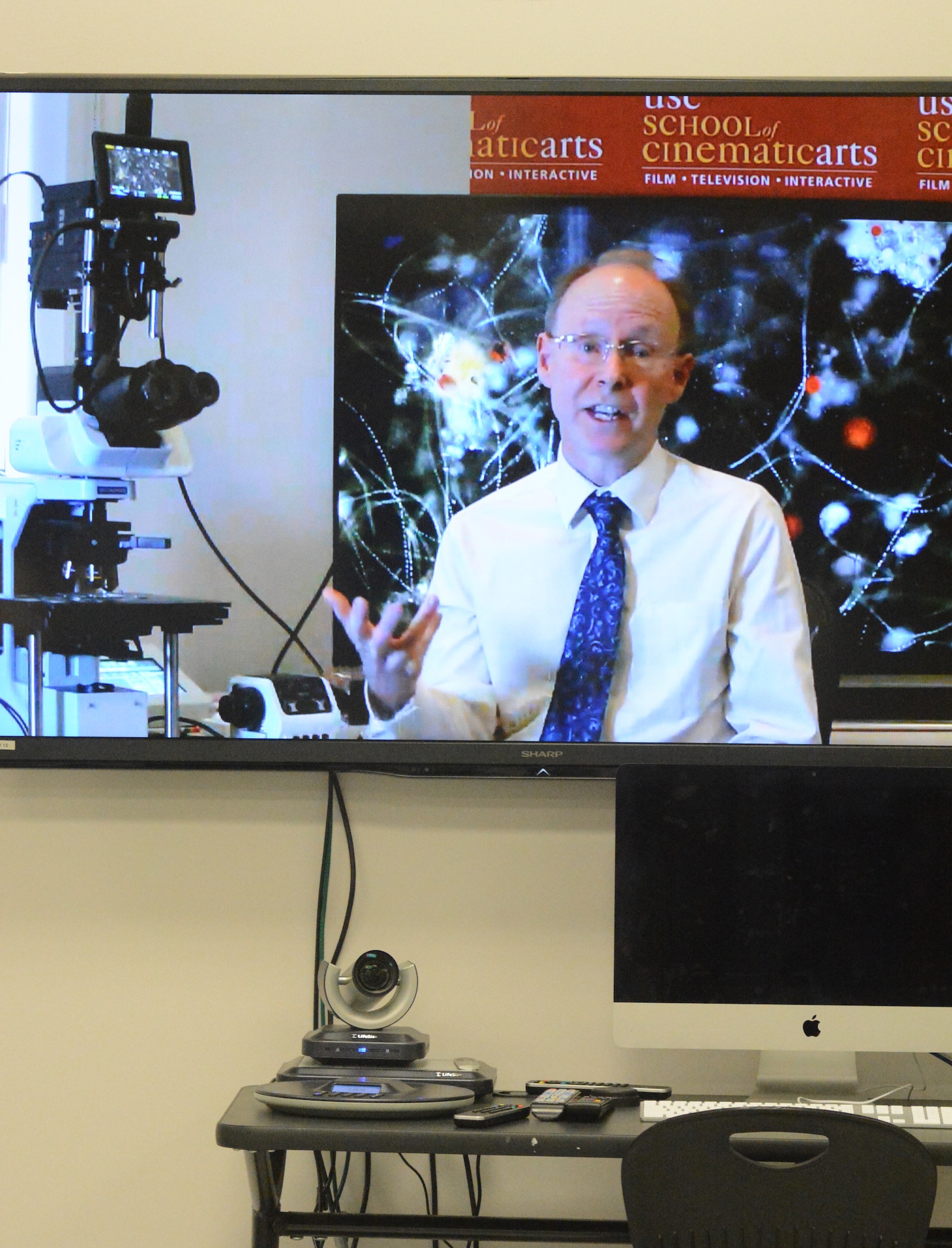In May of last year, 11th-graders at STEM School Chattanooga controlled a research-grade microscope 1,800 miles away in Los Angeles using EPB's gigabit internet network that was connected to an even higher-speed network linking 60 research universities, including the University of Tennessee at Chattanooga.
Among the creatures Chattanooga students saw in the "pond scum" far away at the University of Southern California were rotifers, microscopic animals with cilia, or hair, that spins like a wheel to create a vortex that sucks in prey.
"I had seen a rotifer, but not the cilia beating back and forth and not the vortex," STEM School biology teacher Shannon Seigle said then.
That remote microscope technology will be showcased again today in Austin, Texas, at the National Smart Cities Innovation Summit at which Chattanooga was honored as one of the leading cities in the effort to come up with services and applications that take advantage of gigabit-per-second internet.
"That's a perfect example of using the gigabit network in unusual ways," said Bill Wallace, executive director of US Ignite, a nonprofit organization whose goal is to promote adoption of "ultra-fast" broadband.
"Students were able to see a life-like videoconference of world-class biology professors, they were able to see 4K images under a microscope and they were able to manipulate the microscope so they could move it around and see what they wanted to see."
That's not possible through an ordinary internet connection, Wallace said. It can only be done through what he called internet2 - a network that has one-gigabit connectivity from start to finish, with no low-speed bottlenecks. Internet2 is sort of like the Bat Phone in the old TV series "Batman" that gave Police Commissioner Gordon direct connection to the Bat Cave.
Chattanooga also will demonstrate the technology with live 4K streaming of an alligator from the Tennessee Aquarium, and a joint musical performance between Chattanooga Public Library and Austin using low latency conferencing technology and internet2.
Chattanooga a leader
Chattanooga's three applications are among a dozen to be showcased today in Austin as gig cities across the country figure out ways to better use and connect their high-speed data services.
Chattanooga is one of 15 "smart gigabit cities" working to tap the potential of super-fast internet. Each smart gigabit city has committed to develop at least two gigabit-enabled applications or public services and to share them with other cities in the program. The program is sponsored by US Ignite, which was awarded a $6 million National Science Foundation grant last fall "to build a living lab of test beds for smart gigabit applications."
"Chattanooga was definitely the pioneer in this space, but there are more players and more opportunities every day for using gigabit speed," said Ken Hays, president of the Enterprise Center in Chattanooga who is among nearly 2,000 delegates to this week's conference in Austin. "Five or six years ago, people were asking what you would ever do with the gig. Now people want to know when they can get it. The next generation of the internet is starting to take shape."
Chattanooga's municipal electricity provider, EPB, pioneered the first communitywide gigabit internet in the Western Hemisphere in 2010. But now Comcast, AT&T, Google and others are matching such high-speed links, at least for business customers.
Hays likened the new gig connections to how electricity first developed with new applications for such power being developed and new lines and connections being needed to extend service everywhere.
In a statement, Chattanooga Mayor Andy Berke said he is "proud to join a handful of cities to create a network of communities looking for real ways to impact everyday life for citizens."
On hand in Austin today to demonstrate the STEM School's microscopy project will be Dr. Richard Weinberg of USC School of Cinematic Arts, STEM School Chattanooga science instructor Shannon Siegle, and Katie Stiffler, a 12th-grader at the magnet high school on the campus of Chattanooga State Community College.

